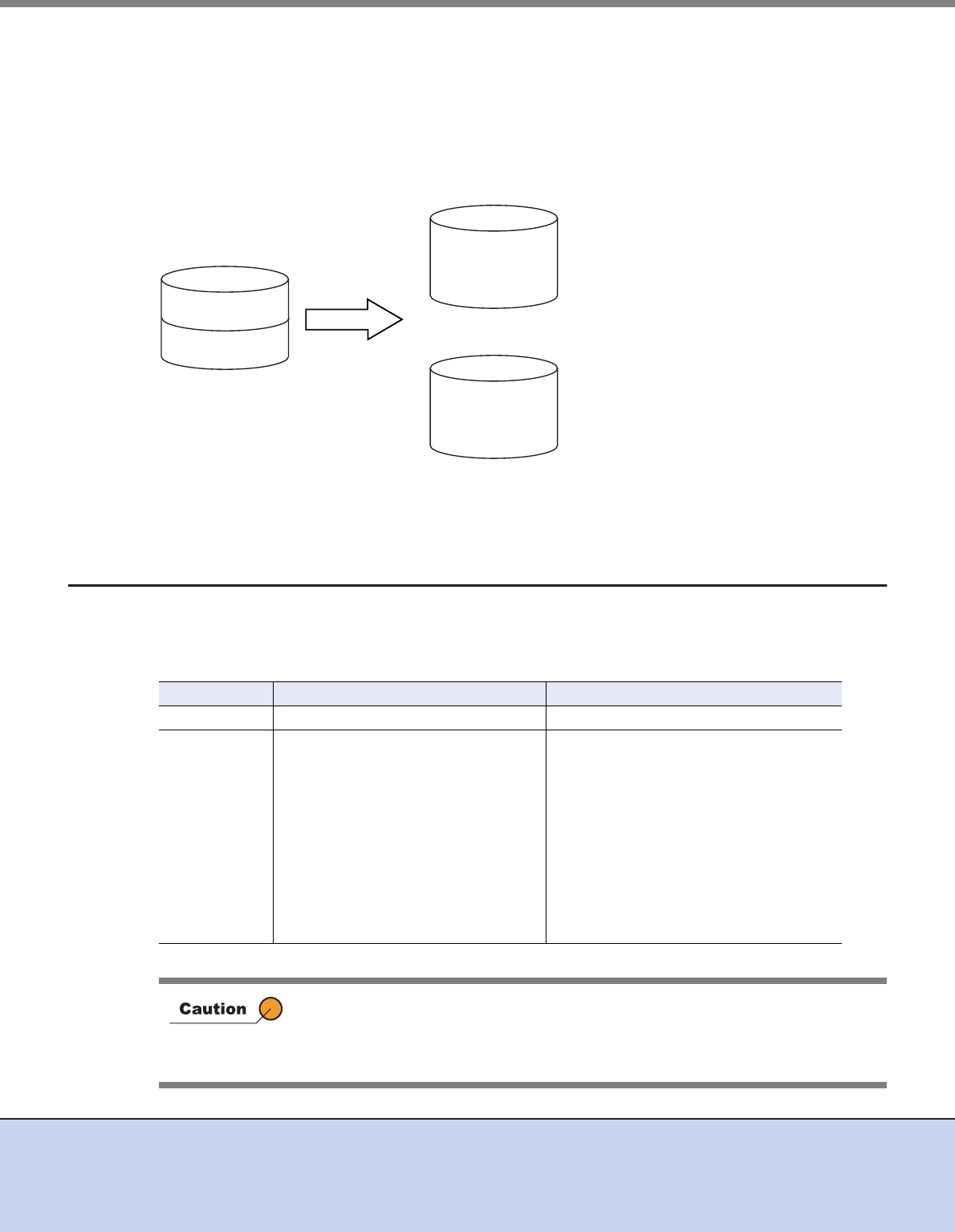
Chapter 3 Preparation
3.2 Shadow Copy Destination Disk Creation
ETERNUS VSS Hardware Provider 2.1 User’s Guide
Copyright 2012 FUJITSU LIMITED P3AM-4582-03ENZ0
30
Example 4
Create the same number of Shadow Copy destination disks as the Shadow Copy sessions that are
executed concurrently and register these disks in the backup disk pool management function.
For example, when the backup of multiple VMs in a Hyper-V Cluster Shared Volume (CSV) is executed
concurrently, the same number of Shadow Copy destination disks as VMs is required.
The following sections explain the types of disks to be used for Shadow Copy destinations that are
supported by VSSHP, and the procedure for estimating disk capacity.
3.2.1 Selection of the Shadow Copy Destination Disk Type
Either a normal volume or an SDV may be used as the Shadow Copy destination. The following table
shows the respective features of a "normal volume" and an "SDV". Choose a disk type according to
your requirements.
Shadow Copy
destination 2
8GB
Shadow Copy
destination 1
8GB
CSV
8GB
VM1
VM2
Normal volume SDV
Copy type QuickOPC SnapOPC+
Features
• Suitable for backup of big databases
and file servers with a large amount
of updates.
• A Shadow Copy destination must
have the same capacity as a source
disk.
• Backup can be performed
regardless of the amount of
updates.
• Suitable for backup of databases and
file servers with only a small amount of
updates.
• Can operate with a capacity of the
Shadow Copy destination that is lower
than that of the source disk.
• When the amount of updates exceeds
the SDV capacity, access to the
Shadow Copy destination is lost.
The required SDV capacity should be
measured in advance.
For QuickOPC, a copy session starts for each copy as the first initial copy even if the copy source is
same. This is why a full copy is performed for each copy session with QuickOPC.


















